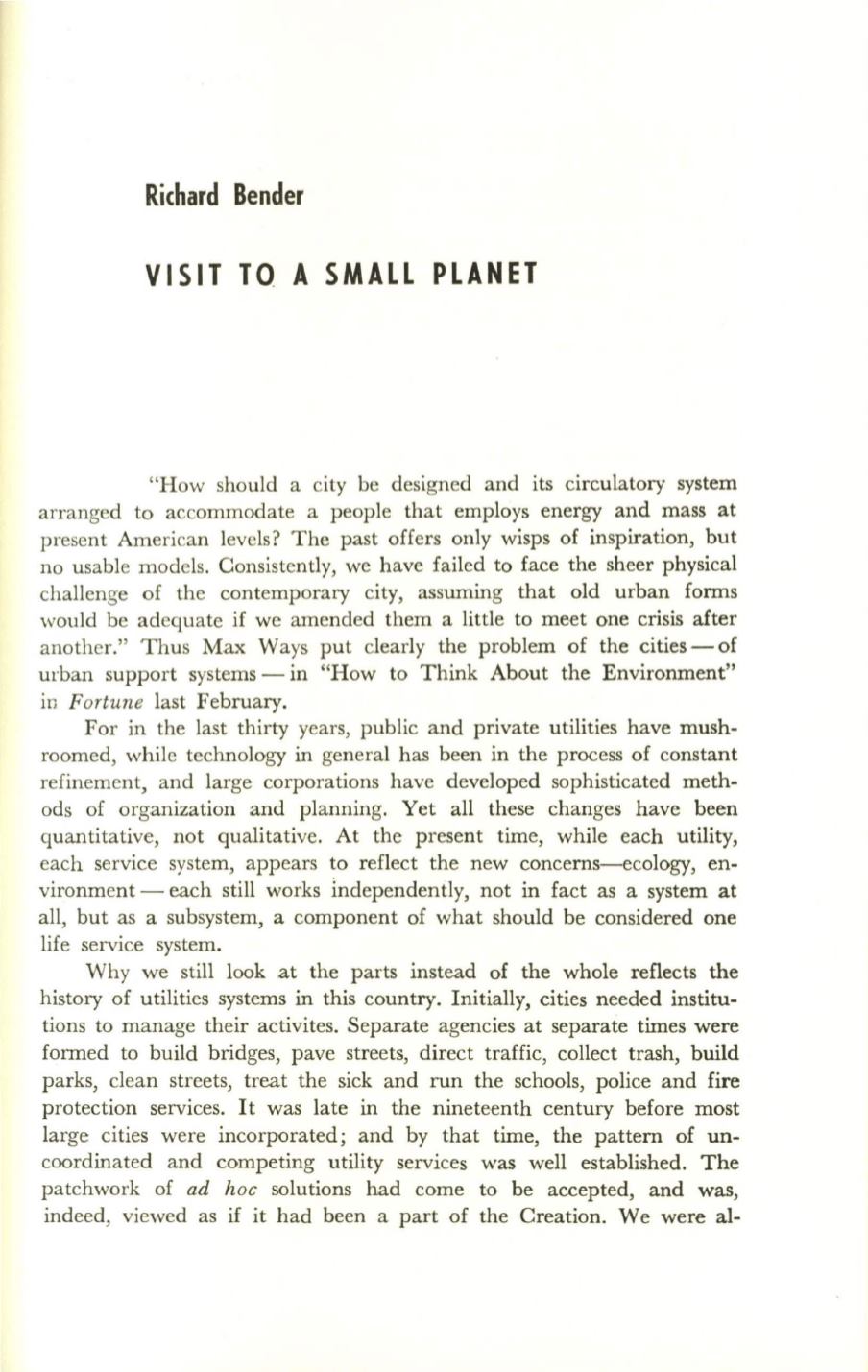
Richard Bender
VISIT TO A SMALL PLANET
"How should a city be designed and its circulatory system
arranged to accommodate a people that employs energy and mass at
present American levels? The past offers only wisps of inspiration, but
no usable models. Consistently, we have failed to face the sheer physical
challenge of the contemporary city, assuming that old urban forms
would be adequate if we amended them a little to meet one crisis after
another." Thus Max Ways put clearly the problem of the cities-of
urban support systems - in "How to Think About the Environment"
in
Fortune
last February.
For in the last thirty years, public and private utilities have mush–
roomed, while technology in general has been in the process of constant
refinement, and large corporations have developed sophisticated meth–
ods of organization and planning. Yet all these changes have been
quantitative, not qualitative. At the present time, while each utility,
each service system, appears to reflect the new concerns-ecology, en–
vironment - each still works Independently, not in fact as a system at
all, but as a subsystem, a component of what should be considered one
life service system.
Why we still look at the parts instead of the whole reflects the
history of utilities systems in this country. Initially, cities needed institu–
tions to manage their activites. Separate agencies at separate times were
formed to build bridges, pave streets, direct traffic, collect trash, build
parks, clean streets, treat the sick and run the schools, police and fire
protection services.
It
was late in the nineteenth century before most
large cities were incorporated; and by that time, the pattern of un–
coordinated and competing utility services was well established. The
patchwork of
ad hoc
solutions had come to be accepted, and was,
indeed, viewed as if it had been a part of the Creation. We were al-


